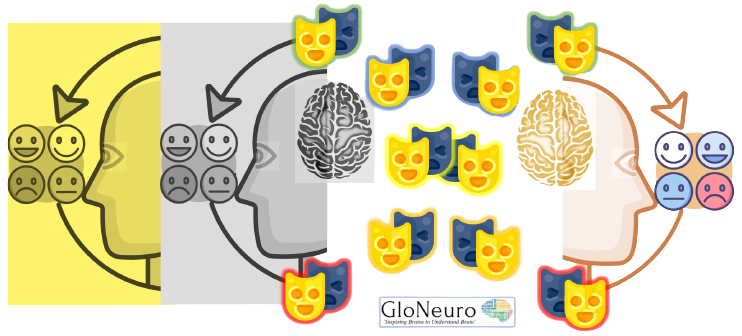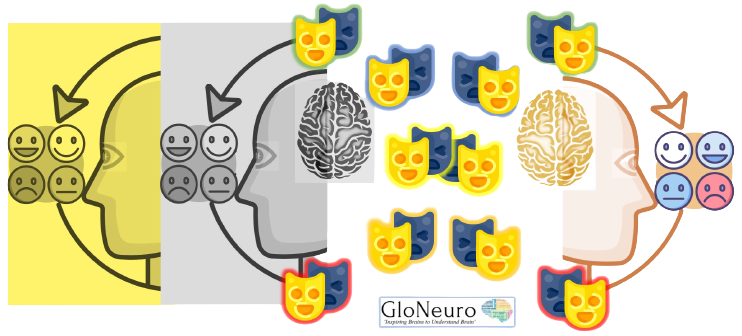Dissociative Personality Disorder
Updated on April 20th , 2022
Author: Arkadeep Bhattacharjee

Today in this article we are going to talk about one of the most curious and interesting disorders of the human mind known as Dissociative Identity Disorder (DID). Previously, also known to many people as split personality disorder. According to the Diagnostic and statistical manual of mental disorders 5 (DSM-5), DID is defined as a disruption in the original identity of a person into two or more distinct personalities. The disruption in identity is accompanied by alterations in affect, behaviour, memory, perception, consciousness, and sensory/motor control. Most of the time it is difficult to remember everyday events, personal information, and traumatic events. A point to be noted here is that the term DID is different from the term Borderline Personality Disorder (BPD) which is regarded as a different form of disorder although they have many similarities. Diagnosis is primarily done through psychiatric exams where individuals are required to fill up a questionnaire and also through the process of psychological counselling. The counsellor then can match the individual’s diagnosis with the criteria of DSM. Unfortunately, not much treatment is available, patients generally undergo psychotherapy and doctor usually gives antidepressants and anxiety medications to deal with the comorbid disorders that come along with DID. So, more research needs to be done!
The main idea of this article is not to go into the technicalities of this disorder but rather to present with a platform to think about the capability of the human mind and also why thinking about DID sometimes can be mind-boggling!
Now let’s go into the possible causes of DID. Imagine a child having a very abusive relationship with his/her family and going through hardships every day of the life. What can happen? Well the mind can form a self-defence mechanism where it starts imaging itself as someone else rather than the actual person who is suffering every day. Just think of it and that is how that person gets temporary solace and it depends on the person how many personalities he/she wants to change for himself/herself to escape the situation. Now prolonged suffering will result in the person staying in those characters even more and with time they go so deep, that they develop multiple personality disorder (MPD) or DID [Marta Cudzik et al., 2020]. A split personality patient often has the following characteristics in themselves; the host, the child, the rescuer or the protector, different gender, and the manager of all personalities.

Now since we discussed the cause of DID let’s look inside that brain of ours and try to see what is happening there.
- For starters, DID has to do a lot with the emotional aspects of our mind, so the structures in the emotional circuit of our brain like the hippocampus, and amygdala tends to get affected and mostly show less cortical volume.
- Next comes the frontal cortex, the region of the brain which carries out executive functions like decision making, and problem-solving. This area also shows less thickness as compared to a healthy individual.
- Regions like the parietal cortex responsible for awareness and perception of self and the orbitofrontal cortex which plays a role in the fear pathway have been observed to be of less volume in the DID brains.
The reason it is so fascinating is that a single person is having a single brain and yet the characters that come out of it have distinct personalities which have their trademark qualities and perform tasks that the other characters are unable to perform. Sometimes it happens that one personality is unaware of the presence of the other personalities in that single body. For example, one personality can speak exclusively English whereas the other personality can only speak Korean. One of the personalities is a child while the other personality can be an old age person with a different attitude.
One of the astonishing cases is the presence of sight and blindness in one single person. A particular individual showed visual responses in one of his personality states whereas the other states showed no visual responses [Strasburger & Waldvogel, 2007]. The study was confirmed with electrophysiological experiments. Now to think of this particular case a person who has been medically diagnosed with blindness has regained vision without any surgery or medicine just by psychotherapy and the switch between blind states and vision state is happening in seconds. Now, wouldn’t it be interesting to check what could have happened at the molecular level during such transitions. Again, it would need well planned studies.
Another case that I want to point out here is one of the most famous cases of psychology, which is the case of Billy Milligan who has been characterized by 24 distinct personalities. I urge you to check out the documentary on Netflix ‘Monsters Inside: The 24 Faces of Billy Milligan’.
In conclusion, the human mind is the least understood feature of a human being. Although we are very much unknown to the universe out there, let me assure you, we are still in infancy in understanding the complexities and the multidimensional aspects of the human mind or our inner universe. To quote Max Planck ‘Science cannot solve the ultimate mystery of nature. And that is because, in the last analysis, we are a part of the mystery that we are trying to solve’.
References
- Marmer SS, Fink D. Rethinking the comparison of borderline personality disorder and multiple personality disorder. Psychiatr Clin North Am. 1994 Dec;17(4):743-71. PMID: 7877901.
- Cudzik, Marta, Soroka, Ewelina and Olajossy, Marcin. “Dissociative identity disorder as a wide range of defense mechanisms in children with a history of early childhood trauma” Current Problems of Psychiatry, vol.20, no.2, 2019, pp.117-129.Doi :10.2478/cpp-2019-0006
- Waldvogel B, Ullrich A, Strasburger H. Blind und sehend in einer person: schlussfolgerungen zur psychoneurobiologie des sehens [Sighted and blind in one person: a case report and conclusions on the psychoneurobiology of vision]. Nervenarzt. 2007 Nov;78(11):1303-9. German. doi: 10.1007/s00115-007-2309-x. PMID: 17611729.
- Daniel Keyes, The Minds of Billy Milligan. The USA. 1981.
Reviewer: Areeba Aziz
Illustration: Dr. Jitendra Kumar Sinha
Editor: Dr. Shampa Ghosh